-
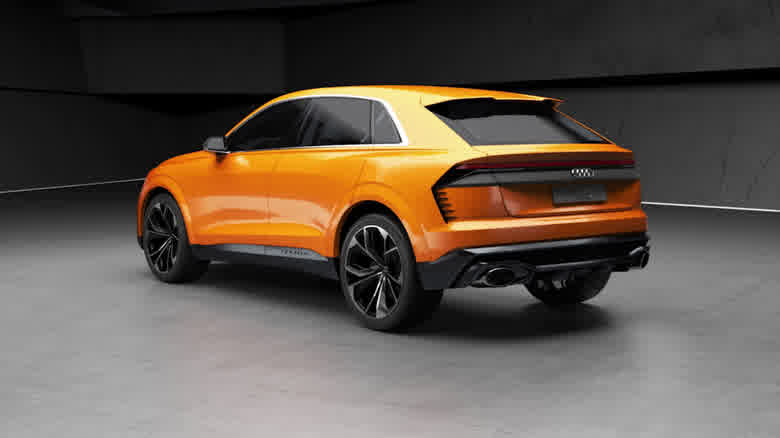
Audi Q8 sport concept Audi Q8 sport concept
Audi Q8 sport concept
Groundbreaking drive system technology and an accentuated sporty look: at the 2017 Geneva International Motor Show, Audi will be presenting another concept car which demonstrates the potential of the future Q8 model range. The Audi Q8 sport concept study demonstrates the vision Audi’s developers and designers have for the dynamic yet efficient SUV of tomorrow.
- Available media:
-

-
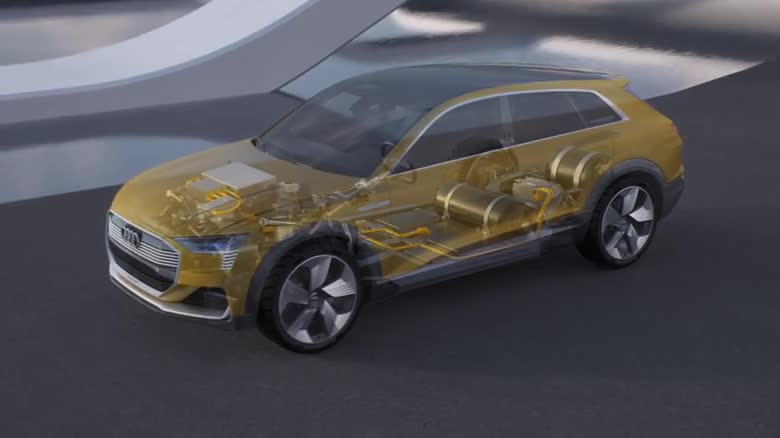
Audi h-tron quattro concept_ENG Audi h-tron quattro concept
Audi h-tron quattro concept
High range, swift refueling, sporty road performance: The Audi h‑tron quattro concept car can boast all these virtues. It combines a highly efficient fuel cell achieving an output of up to 110 kW with a powerful battery that can provide a temporary boost of 100 kW. The car can be fully refueled with hydrogen in around four minutes, and is then ready to drive for up to 600 kilometers (372.8 mi).
- Available media:
-

-
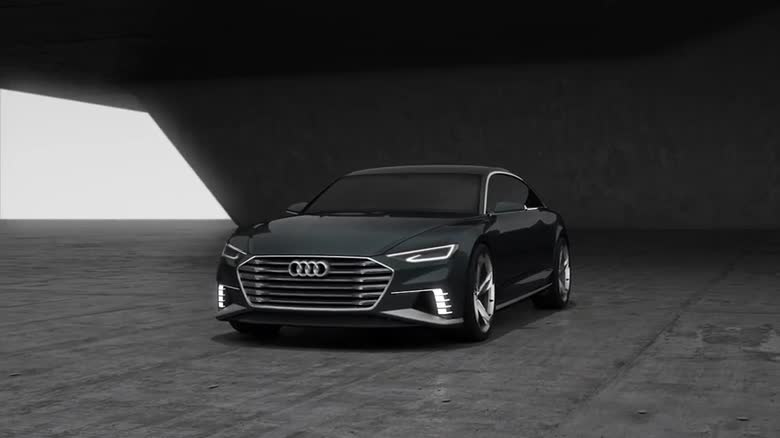
Audi prologue Avant Audi prologue Avant
Audi prologue Avant
The plug-in hybrid drive of the Audi prologue Avant is almost identical to the powertrain in the Audi Q7 e-tron quattro* which will be launched in summer 2015. The 3.0 TDI engine installed in the Audi prologue Avant outputs a maximum of 260 kW (353 hp), a powerful electric motor integrated in the eight-speed tiptronic contributes up to 100 kW. System output is 335 kW (455 hp), while system torque is 750 Nm (553.2 lb-ft). The eight speed tiptronic directs engine power to the quattro permanent all-wheel drive ensuring superior drive characteristics in any situation.
- Available media:
-


-
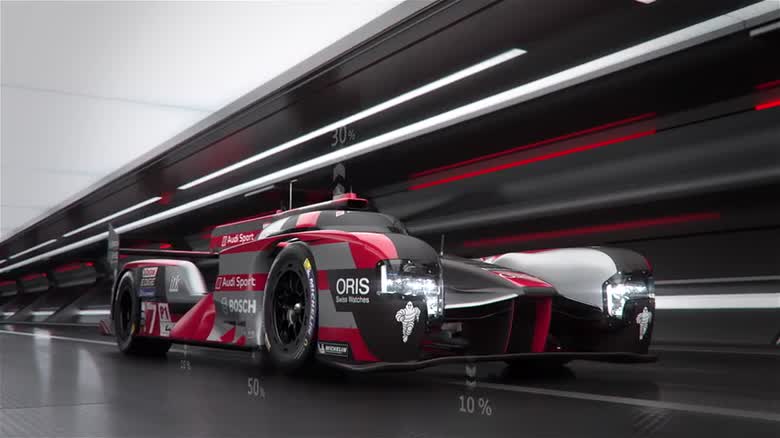
Audi R18 2016 en The new Audi R18
The new Audi R18 2016
For the FIA World Endurance Championship (WEC) and the Le Mans 24 Hours, Audi is emphasizing focal areas in the 2016 season: The Audi R18 that has been redesigned from scratch has almost nothing in common anymore with its predecessor. It features a more radical aerodynamics concept, including a new safety cell, its hybrid drive system is battery-operated for the first time, the V6 TDI engine has been revised, and new system solutions have been added. As a result, Audi’s LMP1 sports car is a vehicle that is more powerful and – once more – clearly more efficient than its predecessor. While the new R18 is Audi’s strongest race car to date, it consumes less fuel than any of the generations before it.
- Available media:
-

-
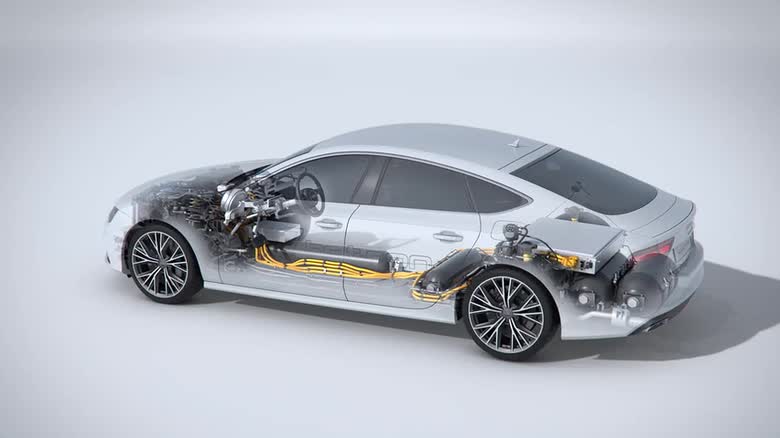
Audi A7 Sportback h-tron quattro Audi A7 Sportback h-tron quattro
Audi A7 Sportback h-tron quattro
It sprints from 0 to 100 km/h (62.1 mph) in 7.9 seconds and reaches a top speed of 200 km/h (124.3 mph). It can cover more than 500 kilometers (310.7 mi) on a single tank, with nothing more than a few drops of water leaving the tailpipe. The A7 Sportback h‑tron quattro* uses a 170 kW electric drive system with a fuel cell as the energy source. Each of the two electric motors drive the wheels of one axle. The Audi technical concept car is a true quattro and thus unique among fuel cell automobiles.
- Available media:
-


-
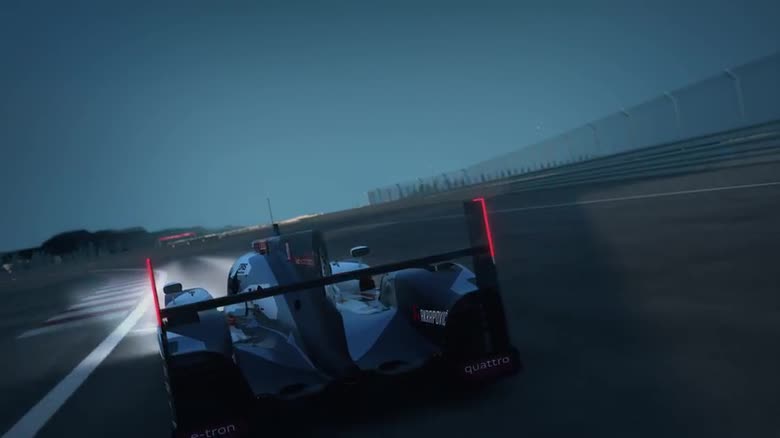
Audi R18 e-tron quattro 2014 Audi R18 e-tron quattro 2014
Audi R18 e-tron quattro 2014
The Audi R18 e-tron quattro is the most complex race car created in Ingolstadt and Neckarsulm to date. This not only applies to the mechanics. The electronics of the most recent LMP1 race car with the four rings is more sophisticated than ever before.
The age of electronic data transmission from the race car on track began for Audi in 1989. At that time, an Audi 90 quattro in the IMSA GTO series radioed eight parameters to the garage where engine speeds and a few pressures and temperatures were plotted on printouts – a tiny step from today’s perspective, but one that provided important insights at the time.- Available media:
-

-
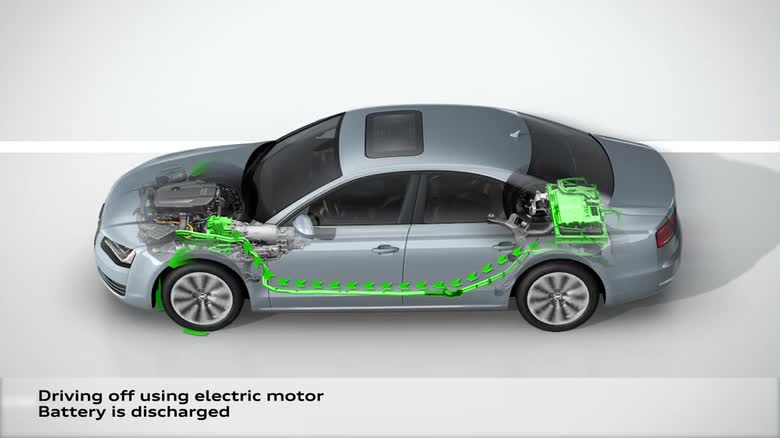
Audi A8 hybrid Audi A8 hybrid
Audi A8 hybrid
The Audi A8 hybrid is designed as a parallel hybrid. Its combustion engine and the electric motor are located one directly behind the other and are linked by a clutch to work together, when necessary. Their interplay – referred to as “boosting” – briefly results in a peak system output of 180 kW (245 hp) and a maximum system torque of 480 Nm (354.03 lb ft).
- Available media:
-

-
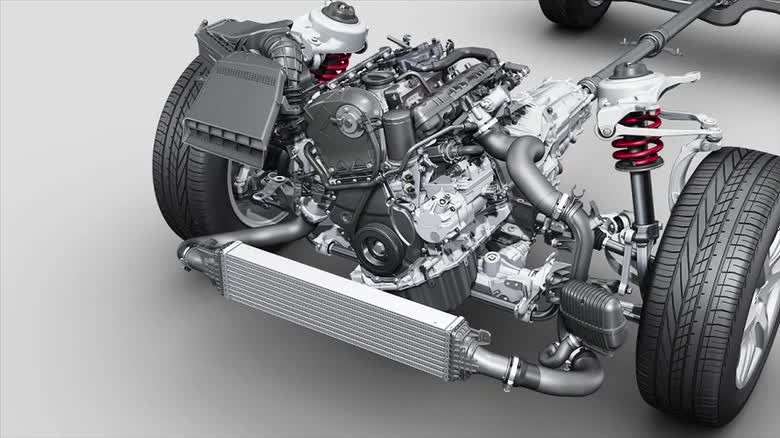
Audi Q5 hybrid quattro Audi Q5 hybrid quattro
Audi Q5 hybrid quattro
The Q5 hybrid quattro is designed as a parallel hybrid – a convincingly efficient concept. Its electric motor generates 33 kW and is located directly behind the combustion engine, a 2.0 TFSI developing 155 kW (211 hp). Both drives can be disengaged by means of a clutch according to complex control logic. They transfer their power to a heavily modified eight-speed tiptronic that does not include a torque converter. The disc-shaped electric motor occupies the space previously occupied by the torque converter.
- Available media:
-


-
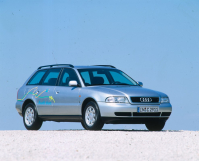
Audi duo
Audi duo
Audi can look back on over 20 years of experience in hybrid technology. The first generation of the Audi duo had its debut as early as 1989 – a concept car based on an Audi 100 Avant. A five-cylinder gasoline engine drove the front wheels, and a part-time electric motor developing 9 kW (12 hp) drove the rear wheels. Nickel-cadmium batteries served as energy stores. Another duo variant based on an Audi 100 Avant quattro followed two years later.
- Available media:
-
